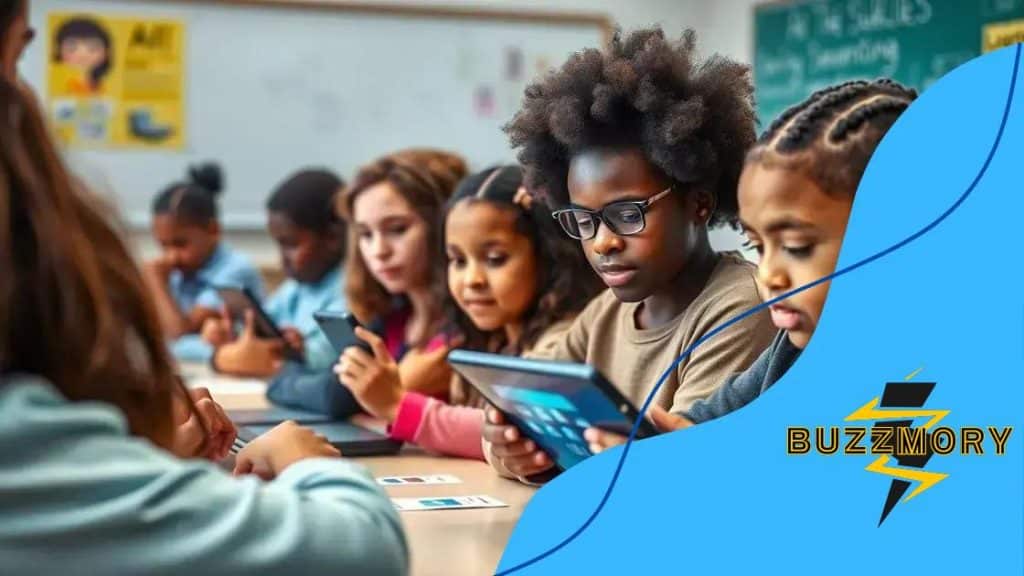How AI is reshaping personalized learning for students

AI is reshaping personalized learning for students by providing tailored educational experiences that adapt to individual needs, ultimately enhancing engagement and improving academic outcomes.
How AI is reshaping personalized learning for students is a transformative development in education. Imagine a classroom where each student learns at their own pace, with resources tailored to their unique needs. This article dives into how artificial intelligence is making this possible.
Understanding personalized learning
To truly grasp the concept of personalized learning, it’s essential to understand its core elements. Personalized learning is about customizing education to fit each student’s unique needs and learning style. This approach helps students learn more effectively and boosts their motivation.
Key Features of Personalized Learning
Personalized learning integrates various strategies designed to engage students. Here are some important features:
- Learning paths tailored to individual strengths
- Continuous feedback to guide improvement
- Flexible pacing to accommodate different learning speeds
- Incorporation of student interests to enhance engagement
With these features, personalized learning becomes more than just a trend. It is a methodology that recognizes the diverse backgrounds and abilities of students.
Benefits of Personalized Learning
One of the major benefits of this approach is its ability to foster student autonomy. Students take control of their learning journey, leading to greater ownership and responsibility. Educational technology plays a critical role in this process, providing tools that adapt to student performances.
These technological tools not only make learning more engaging but also allow educators to monitor progress in real-time. Teachers can then provide tailored support where necessary. This combination of technology and personal connection makes personalized learning an effective strategy for success.
The role of AI in education
The role of AI in education is becoming increasingly significant as technology advances. AI tools are designed to enhance the learning experience by personalizing it to fit individual student needs. This technology analyzes how students learn, adaptively providing resources tailored to their pace and style.
Personalized Learning Experiences
With the help of AI, educators can create individualized learning paths. This approach allows students to grasp content in a manner that resonates with them. Some features of AI include:
- Adaptive learning platforms that adjust difficulty based on student performance
- AI tutoring systems that offer one-on-one help
- Interactive learning materials aligned with students’ interests
- Data analytics to track student progress over time
These features empower teachers by providing insights into each student’s academic journey. As a result, educators can focus on providing support where it’s most needed.
Enhancing Engagement
AI also plays a crucial role in increasing student engagement. Through gamification and interactive elements, learning becomes more enjoyable. Students are encouraged to actively participate, reducing dropout rates and improving knowledge retention.
Additionally, AI can help identify struggling students before they fall too far behind. Early intervention is key in education, and technologies that facilitate this can make a significant difference. By using data-driven insights, teachers can implement targeted interventions to help students catch up.
Benefits of AI-driven personalized learning

The benefits of AI-driven personalized learning are numerous and impactful. By leveraging artificial intelligence, education can be tailored to meet the unique needs of each student. This process not only enhances individual learning outcomes but also fosters a more engaging and motivating environment.
Improved Learning Outcomes
One significant benefit is the improvement in learning outcomes. AI can analyze student data and adjust the curriculum accordingly. This means:
- Students receive material suited to their current level of understanding.
- Teachers can identify specific areas where students struggle.
- Instant feedback allows for quicker adjustments to learning strategies.
The customization of educational content ensures that students are neither bored nor overwhelmed.
Increased Engagement and Motivation
AI-driven personalized learning greatly increases student engagement. By utilizing tools that align with students’ interests, learning becomes fun and interactive. For example, gamified learning experiences encourage students to participate actively in their education. When students feel that the material is relevant to them, their motivation to learn significantly increases.
Another essential benefit of AI in education is its ability to promote self-directed learning. With personalized pathways, students can set their own goals and progress at their own pace. This autonomy leads to greater ownership of their education, fostering essential lifelong learning skills.
Challenges of implementing AI in classrooms
The challenges of implementing AI in classrooms are significant yet manageable with the right strategies. As schools integrate artificial intelligence into teaching, they face several hurdles that can hinder progress. Understanding these challenges is essential for effective implementation.
Cost and Resource Allocation
One main challenge is the cost associated with AI technology. Schools often have limited budgets, which can make it difficult to acquire and maintain advanced AI tools. These expenses can include:
- Purchasing software licenses and hardware
- Training teachers to use new technology effectively
- Maintaining and updating the AI systems
Without proper funding, the integration process can stall, leaving schools behind in the technology race.
Training and Support for Educators
Another significant obstacle is the need for professional development for teachers. Many educators may not feel comfortable using technology in their classrooms. Ongoing training and support are vital for teachers to become confident in utilizing AI tools. This includes learning how to:
- Analyze data produced by AI systems
- Incorporate AI into lesson planning
- Adjust teaching methods based on AI feedback
Schools must invest in comprehensive training programs to help teachers adapt to these changes.
Data Privacy and Security Concerns
Moreover, with the increasing use of AI comes concerns about data privacy and security. Collecting and storing student data requires strict measures to protect sensitive information. Parents and educators worry about how data is used and who has access to it. Establishing clear guidelines and policies is crucial to ensure that AI integration does not compromise student privacy.
Future trends in AI and education
The future trends in AI and education are exciting and full of potential. As technology advances, the educational landscape is set to change dramatically, benefiting students and teachers alike.
Personalized Learning at Scale
One of the most notable trends is the increase in personalized learning experiences. AI will allow educators to create tailored learning paths for each student. This means that lessons will adapt in real-time to meet students where they are. Eventually, each student will have access to a customized curriculum that matches their learning style and pace.
- AI tools will analyze student performance, providing immediate feedback.
- Curriculums will become more engaging by aligning with student interests.
- Teachers will receive support in identifying the best resources for their students.
These innovations will enhance educational outcomes and encourage a love for learning.
Integration of Virtual and Augmented Reality
Another emerging trend is the incorporation of virtual and augmented reality into classrooms. These technologies create immersive learning environments. For example, students can explore historical events or scientific concepts in 3D, leading to deeper understanding.
As VR and AR become more affordable, schools will increasingly adopt these tools, enriching classroom experiences. Students will be able to collaborate in virtual spaces and gain practical skills needed for the future job market.
Data-Driven Decision Making
In the coming years, schools will rely more on data-driven insights to evaluate educational methods. AI will help analyze large data sets to determine what teaching strategies are most effective. By assessing student learning trends, educators can make informed decisions that enhance classroom practices.
This approach not only improves teaching methods but also helps identify students who may need extra support.
FAQ – Frequently Asked Questions about AI in Education
What are the primary benefits of AI in education?
AI in education provides personalized learning experiences, improves engagement, and allows educators to tailor their teaching strategies based on individual student needs.
What challenges do schools face when implementing AI?
Schools often struggle with costs, the need for teacher training, and concerns about data privacy and security when integrating AI technologies.
How will AI change the future of learning?
The future of learning will see increased use of personalized learning paths, virtual and augmented reality tools, and data-driven decision-making to enhance educational outcomes.
What role do teachers play in an AI-enhanced classroom?
Teachers will serve as facilitators, using AI tools to support tailored learning experiences while providing personal mentorship and guidance to students.





